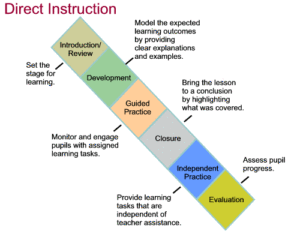Interaction Prompt
Instructional design is the creation of “instructional experiences which make the acquisition of knowledge and skill more efficient, effective, and appealing. (Merrill, Drake, Lacy, Pratt, 1996).” The instructional design includes three parts, tools, people, and organizations. The tools have the process, theory, and physical. The people include management, ID Teams, SMEs, Learners. Organizations have government, corporation, military, higher ED, and K-12. Whilst it has been argued that an interactive learning system has the potential to produce a high‐quality learning environment that actively and purposefully engages learners, in most cases the design does not take into account actual studies of learners’ different learning styles or empirical knowledge of their learning preferences. The video describes what instructional design is and what it includes. Interaction is valuable for long-term learning habits, and understanding these concepts with full support. The design is very useful for classroom environments and online lectures.
After watching the video, give students a certain amount of time to accept new knowledge, and then let them take notes. You can check their learning situation by letting students take photos and upload the photos of the notes. This activity will not bring me a lot of workloads, because I only need to check the notes uploaded by the students. The work is both manageable and worthwhile because this is the best way to check the students’ own learning process and ability. The video needs to be designed to be lively and interesting and need to have knowledge in it. Because only interesting videos can attract more people to watch, and when there is a certain amount of knowledge in your video, students are more willing to learn knowledge through this interesting way. Interactive learning is a necessary and fundamental mechanism for knowledge acquisition and the development of both cognitive and physical skills. Before designing interactive learning resources it is important to understand how interactivity works and the nature of the environments that are needed to support it. The effectiveness of these environments also needs to be examined.
Video: https://www.youtube.com/watch?v=w0iQgStGND4
Article: https://link.springer.com/chapter/10.1007/978-94-011-0942-0_1


Recent Comments